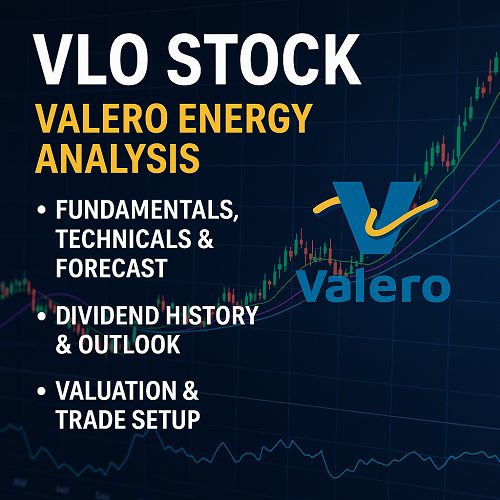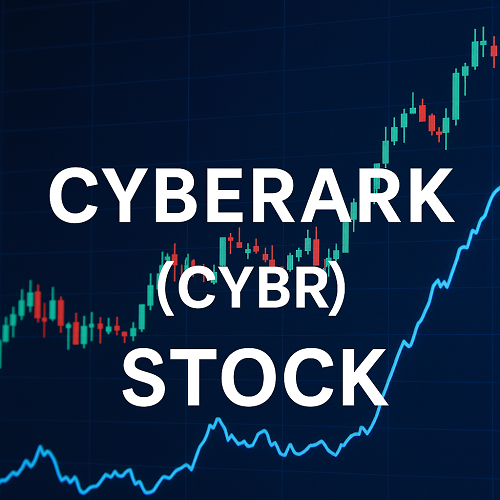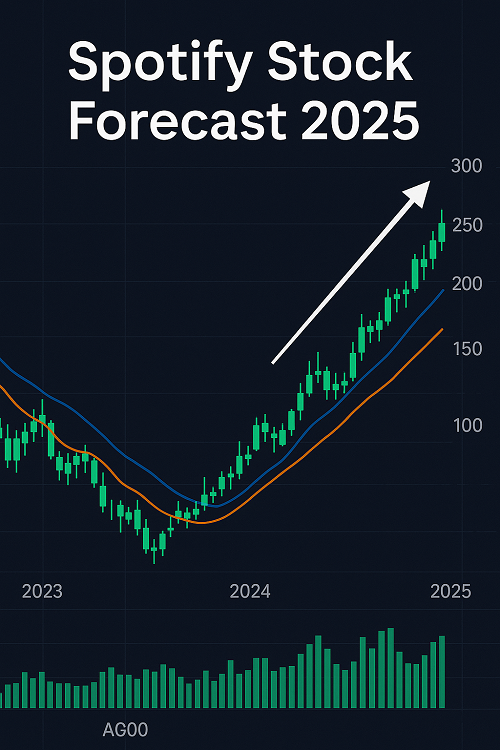Valero Energy Corporation (NYSE: VLO) is one of the largest independent refiners in the U.S. Investors and analysts often keep a close eye on the Valero stock price due to its strategic position in the market. With energy prices, refining spreads, regulatory transitions, and the push toward lower-carbon fuels all in flux, VLO stock sits at the crossroads of opportunity and risk.
In this article, we dig deep—covering fundamentals, technicals, scenario modeling, industry dynamics, dividend sustainability, and trade setups. Our goal: give you a truly authoritative resource on Valero stock that offers more depth, clarity, and actionable insight than standard quote pages.
Thesis Summary (2025 Outlook):
- If macro conditions favor high crude spreads and regulatory clarity, VLO is well-positioned to deliver strong earnings
- But downside risks (energy price collapse, carbon regulation, refining overcapacity) are real
- We lean bullish with a base target of $180 under base-case, with a bull case to $200+, and a conservative downside floor near $120–$130
Company Overview & Business Model
Valero at a glance
- Headquartered in San Antonio, Texas, Valero owns and operates 15 refineries across the U.S., Canada, and the U.K.
- In addition to refining, it has interests in renewable diesel and ethanol (via Diamond Green Diesel and other operations)
- End products include gasoline, jet fuel, diesel, asphalt, petrochemical feedstocks, and co-products such as sulfur
Revenue & business segments
Valero’s core revenue streams derive from three segments:
- Refining – highest contributor, margin sensitive
- Renewable Diesel / Ethanol – growth area amid sustainability trends
- Petrochemical / Co-products / Other
Because refining is commodity-intensive, Valero’s profitability depends heavily on crack spreads (difference between product and feedstock costs), throughput utilization, and regulatory factors (e.g. emissions constraints, carbon pricing).
Financial & Operating Performance
Revenue & Margins
| Metric | Latest (TTM or latest fiscal) | YoY / Trend |
|---|---|---|
| Revenue (TTM) | ~ $117.6 billion | Growing on higher energy prices |
| Net Income (TTM) | ~$760 million | Margin under pressure |
| Net Profit Margin | ~0.65% | Quite thin for refining |
| Return on Assets (ROA) | ~2.20% | Modest |
| Return on Equity (ROE) | ~2.76% | Under pressure |
| Debt / Equity | ~39.5% | Moderate leverage |
| Price to Earnings (TTM) | ~ 64–66× | Very rich multiple |
| Forward P/E | ~ 16× (depending on estimates) | More realistic |
Observations & implications
- The current P/E looks steep, but that is partly due to cyclical swings; forward estimates expect improvement in profitability.
- Thin net margins are expected in refining businesses when spreads are squeezed; the ability to pass through feedstock costs is critical.
- Moderate leverage gives room to withstand downturns, but rising interest rates or weakening margins could strain debt servicing.
Balance Sheet & Liquidity
- Valero carries meaningful cash and liquidity buffers.
- Assets are heavily weighted toward fixed infrastructure (refineries, pipelines, equipment) — a challenge in periods of weak utilization
- Operating cash flow is the lifeblood; free cash flow must cover capex + dividends.
Cash Flow & Capital Expenditure
- In strong spread environments, refiners generate significant cash flows; in weak ones, margins evaporate.
- Capex is substantial (maintenance, upgrades, emissions compliance).
- Free cash flow after all capital needs is what supports dividends and debt repayment.
Dividend & Shareholder Returns
Dividend History & Yield
Valero is known for its quarterly dividends. Over recent years:
- Typical quarterly payout has been ~$1.07–$1.13 per share in recent cycles (see corporate investor disclosures)
- That equates to an annualized dividend of ~$4.28–$4.52, giving a yield in the ballpark of 2.5–3%, depending on share price fluctuations
- The ex-dividend dates and consistency suggest a strong management bias toward returning cash to shareholders.
Sustainability & Payout Coverage
Key metrics to assess sustainability:
- Payout ratio on free cash flow — in weak spread environments, payout risk increases
- Debt coverage — dividends must not crowd out debt obligations or maintenance capex
- Buffer retention — prudent firms maintain cash buffers for cyclicality
Valero’s relatively modest debt and its ability to generate cash in good cycles help support a durable dividend framework — but in adverse scenarios dividend cuts or freezes could occur, especially if refining margins collapse or regulatory costs rise.
Total Return & Share Buybacks
- In strong cycles, refiners may also repurchase shares or reduce debt
- The total return to shareholders includes capital appreciation from multiple expansion during energy upswings
Industry Context & Macro Tailwinds
To understand VLO’s future, we must anchor it in its industry and macro environment.
Key Drivers for Refiners
- Crack Spreads / Margins: The spread between refined product prices and crude input costs is the primary profitability driver.
- Utilization / Throughput: Idle capacity or demand weakness kills operating leverage.
- Feedstock Cost Volatility: Sudden crude price drops or spikes can compress margins.
- Regulatory & Environmental Policy: Carbon pricing, emissions control, renewable fuel mandates.
- Energy Transition & Biofuels: Growth in renewable diesel, hydrogen, carbon capture may shift long-term dynamics.
- Global Demand & Geopolitics: Oil demand mix, trade flows, supply shocks matter.
Tailwinds & Headwinds
Tailwinds
- Elevated oil prices / volatility that widen crack spreads
- Strong demand in developing markets and aviation recovery
- Supportive regulation (e.g. credits or incentives for renewable diesel)
- Infrastructure constraints or capacity rationalization reducing overcapacity
Headwinds
- Aggressive carbon regulation or taxes
- Increased competition from emerging energy sources
- Collapse in margins from oversupply or demand destruction
- Higher operating costs (capex, maintenance, compliance)
Relevance of Renewable Diesel & Biofuels
Valero is investing in lower-carbon fuels (e.g. Diamond Green Diesel) to align with regulatory and market shifts. This can provide a diversification buffer if fossil fuel margins weaken, though the returns and scaling challenges must be assessed.
Peer Comparison & Competitive Position
Peer Set
Major peers include:
- Marathon Petroleum (MPC)
- Phillips 66 (PSX)
- HF Sinclair
- PBF Energy (PBF)
- Sunoco, Delek, others
Comparative Metrics
Compare across key axes: throughput volume, margins, debt levels, diversification into renewables, geographic footprint, capital discipline, dividend yield, valuation multiples.
For example:
| Name | Refining Throughput / Scale | Debt / Equity | Dividend Yield | Renewable Exposure | Forward P/E |
|---|---|---|---|---|---|
| Valero (VLO) | Very high | ~39% | ~2.5–3% | Active | ~16× |
| Marathon (MPC) | Large | Moderate | ~3–4% | Some | lower multiples in good cycles |
| Phillips 66 | Diversified (midstream + chemicals) | Moderate | ~3%+ | More varied | varied |
Valero’s advantages: scale, experience, renewable pivot. Weaknesses: exposure to margin cycles, regulatory risk.
SWOT Summary
Strengths
- Scale and integrated operations
- Strong cash generation in favorable cycles
- Diversification into renewable fuels
- Reasonable leverage
Weaknesses
- Highly cyclical earnings
- Sensitivity to feedstock volatility
- Regulatory / environmental risk
Opportunities
- Upside from carbon or renewable policy incentives
- Growth in renewable diesel segment
- Consolidation or capacity rationalization in industry
Threats
- Sharp drop in refining margins
- Stricter emissions regulation or carbon taxation
- Disruptive energy technologies (e.g. hydrogen, electrification)
Valuation & Forecast
Valuation Approaches
1. Discounted Cash Flow (DCF) / Free Cash Flow to Firm (FCFF)
- Project revenues, margins, capital expenditures, working capital over 5–7 years
- Terminal growth assumption (e.g. 1–2%)
- Discount at WACC (reflecting risk, industry, debt)
2. Multiples Benchmarking
- Forward P/E vs peer group
- EV/EBITDA
- Price-to-book, Price-to-sales
3. Scenario / Sensitivity Analysis
- Base case (moderate spreads)
- Bull (high spreads, favorable policy)
- Bear (margin compression, regulatory drag)
Forecast & Target Prices
Here’s a simplified illustration (for example purposes):
| Scenario | Assumed Average Crack Spread | Estimated EPS (year 2) | Multiple | Implied Price |
|---|---|---|---|---|
| Bear Case | Compressed margins | $2.50 | 12× | ~$30 (or ~ $120–$130 area for VLO) |
| Base Case | Moderate favorable margins | $8.00 | 20× | ~$160 |
| Bull Case | Strong margins, renewable tailwinds | $10.00+ | 20–25× | $200+ |
Given current consensus forward P/E ~16× , a more aggressive multiple could be justified if growth and margins improve.
Our base target: $180
Bull case: $200+
Downside floor in stress: $120–$130
Analyst consensus (from MarketWatch / analyst estimates) often sits between ~$170–$190 depending on assumptions.
Technical / Chart Analysis
(Here you’d insert a chart of VLO with trendlines, moving averages, etc.)
Key Levels & Patterns
- Support Zones: ~$120–$130 region (prior lows)
- Resistance Zones: $170–$180, then ~$200
- Moving Averages: 50-day, 200-day crossovers
- Patterns: Potential ascending triangle breakout, consolidation zones
Momentum & Indicators
- RSI, MACD, Stochastic – watch divergence / overbought / oversold levels
- Volume confirmation on breakouts
- Trend strength (ADX)
Technical Outlook
If VLO breaks above $170–$180 with conviction and volume, it could accelerate toward $200+. On failure, falling under $130 would raise risk of retest lower support and trend reversal.
Risks & Catalysts
Catalysts (Upside)
- Surge in oil and refined product demand
- Tight global refining capacity or outages
- Favorable carbon / renewable fuel incentives
- Strategic acquisitions or partnerships
- Improved operational efficiency
Risks (Downside)
- Crash in margins or feedstock cost inflation
- Regime change: carbon tax, emissions penalties
- Regulatory restrictions in biofuels / renewables
- Capex overrun, compliance costs
- Global recession reducing energy demand
Trade Setup & Strategy
Here are potential ways a trader or investor might approach VLO stock:
Long-term investor
- Buy in phases (dollar-cost) between $130–$160
- Use ~$120 as worst-case buffer
- Hold through cycles, reinvest dividends
Swing / Technical trader
- Enter on breakout above $170 with strong volume
- Initial stop under $150 or below support
- Target zones: $200, maybe $220 if momentum continues
Options (for more advanced traders)
- Use call spreads if bullish (caps risk)
- Use protective puts or collars for downside protection
- Write covered calls in sideways range
Risk management
- Limit position to a percentage of portfolio
- Always set stop-loss levels
- Monitor macro / energy indicators (oil, crack spreads, inventory data)
Conclusion & Key Takeaways
- VLO stock is a cyclically sensitive play in refining, with significant upside potential if margins expand, policy supports low-carbon fuels, and demand stays strong.
- That said, it is not without material risk — margin compression, regulation, or supply shocks could hit hard.
- Our base target of $180 is plausible in a favorable environment; $200+ is possible in a bull cycle; downside risk could drag price into $120–$130 territory in severe stress.
- From a trade perspective: look for technical breakouts, scale in carefully, and always manage risk.





 XAUT-USD
XAUT-USD  AMD
AMD  MARA
MARA  SHOP
SHOP  BULL
BULL  CL=F
CL=F